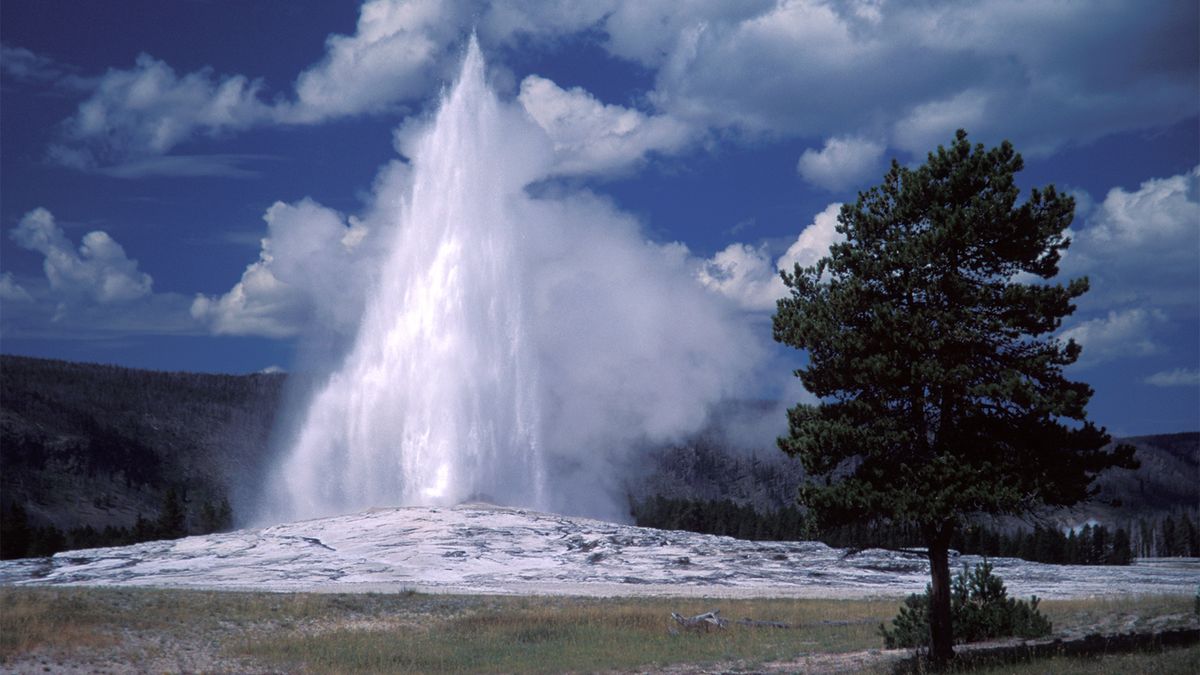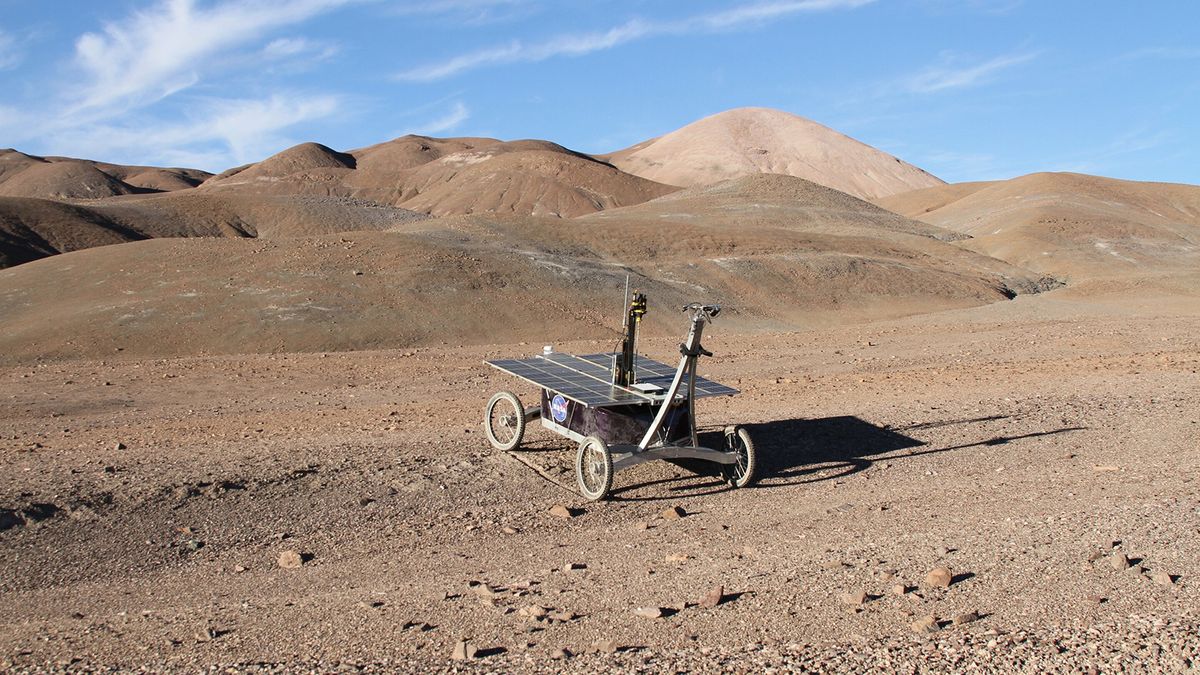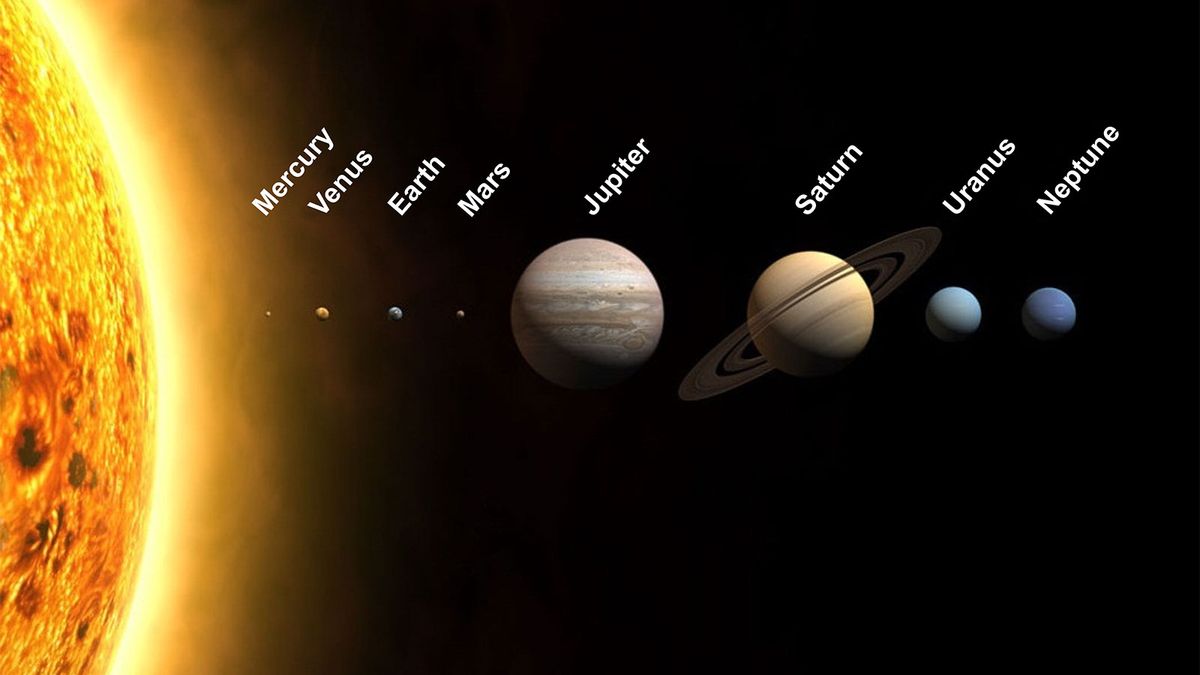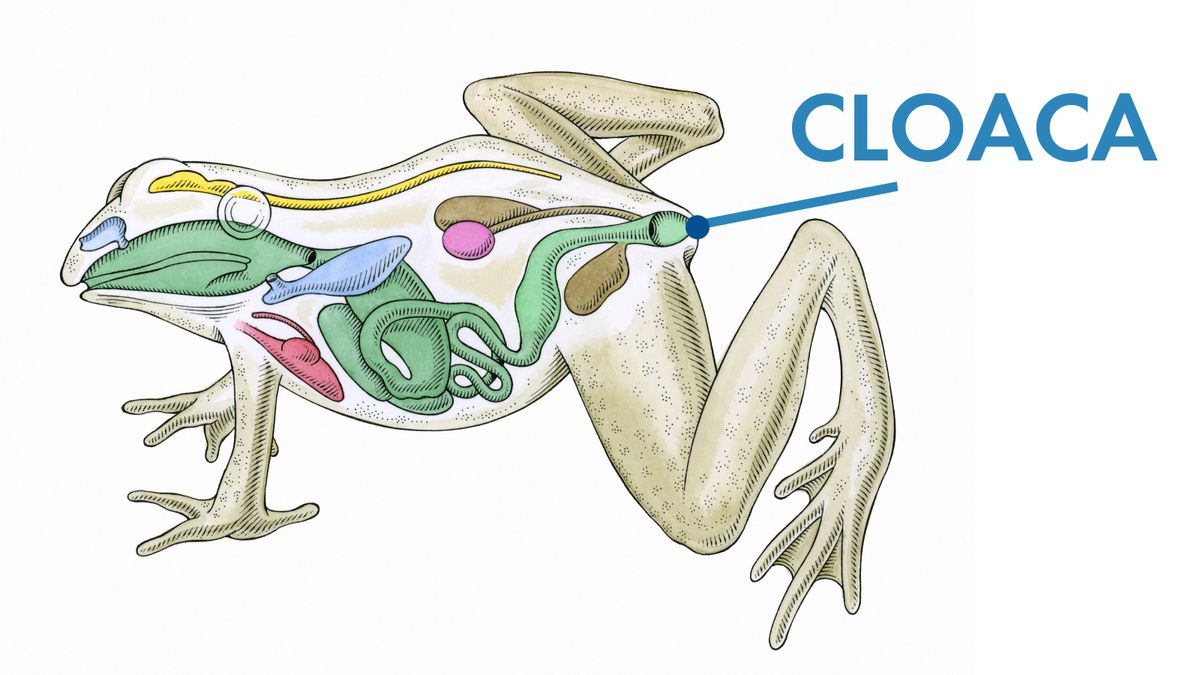
Каждая религия в мире имеет свою версию происхождения жизни и материи. В авраамических религиях, включая христианство, иудаизм и ислам, эти объяснения основываются на предпосылке, что Бог создал вселенную и все в ней. Это основной принцип креационизма на Западе.
В Соединенных Штатах публичные дебаты между христианским креационизмом и эволюцией , когда-то считавшиеся мертвыми после судебного процесса над обезьяной Скоупса, снова возобновились. Большинство людей рассматривают эволюцию и теорию естественного отбора как основы науки; теперь многие сторонники креационизма хотят, чтобы их взгляды были приняты в качестве научной теории, известной как креационная наука . В этой статье мы рассмотрим различные формы христианского креационизма, коснемся креационистских взглядов в других религиях и выясним, что вызывает полемику.
Что такое креационизм?

Креационизм — это общий термин, включающий все убеждения в том, что происхождение вселенной и жизни связано со сверхъестественными или чудесными средствами. В христианстве креационизм утверждает, что Бог (христианское божество) сотворил мир и все в нем из ничего. Креационисты считают, что рассказ о начале мира, представленный в Бытии , первом томе Ветхого Завета, является верным описанием происхождения всего, что мы видим вокруг себя. В начале Книги Бытия говорится:
Создание вселенной и всего, что в ней содержится, заняло в общей сложности шесть дней. В первый день Бог сотворил свет и тьму. На втором Он сотворил небеса, а на третьем Он создал сушу и растительность Земли. Бог создал Солнце и Луну на четвертый день, рыб и птиц на пятый день, а наземных животных и людей на шестой день.
Хотя описание творения в Книге Бытия является основой всего христианского креационизма, на самом деле в христианстве существует множество различных типов креационистов. Креационист плоской Земли, например, верит не только в то, что Бог создал мир из ничего, но и в то, что Земля плоская, неподвижная и ей всего около 6000 лет. Прогрессивный креационист, с другой стороны, принимает взгляды современной астрономии и методы геологического датирования, определяющие возраст Земли в миллиарды лет, но не принимает находки современной биологии: он считает, что вид может эволюционировать только под направление Бога.
Мы можем примерно расположить наиболее хорошо задокументированные типы креационизма в континууме от наиболее буквального к наименее буквальному толкованию Библии:
В следующих разделах мы рассмотрим каждую из этих разновидностей креационизма и выясним, во что верят их сторонники.
- Типы креационизма: плоскоземельный и геоцентрический.
- Типы креационизма: молодая Земля
- Типы креационизма: Старая Земля
- Спор: религия или наука?
Типы креационизма: плоскоземельный и геоцентрический.

На строго буквальном конце спектра креационисты плоской Земли и современные геоцентристы отвергают практически всю современную науку. В дополнение к прочтению Бытия как фактического рассказа о происхождении мира сторонники плоской Земли и геоцентристы также сохраняют некоторые из древнееврейских представлений о строении Земли и Солнечной системы, ссылаясь на определенные библейские отрывки как на источник их убеждения.
Креационизм плоской Земли
Креационизм плоской Земли утверждает, что Земля плоская , неподвижная и является центром Вселенной . Он покрыт сплошным куполообразным небом, что, скорее всего, относится ко второму дню творения, когда «сотворил Бог твердь и отделил воду, которая под твердью, от воды, которая над твердью… И Бог назвал твердь небом» (Бытие 1:7-1:8). Звезды, солнце и луна встроены в этот жесткий купол.
Обращаясь к теме очевидного путешествия Христофора Колумба вокруг сферической Земли, в заявлении о миссии Общества плоской Земли говорится: «Используя сложную установку, включающую сотни зеркал и несколько мешков из мешковины, [Христофор Колумб] смог создать настолько убедительную иллюзию, что на самом деле считалось, что он обогнул всю планету и приземлился в Вест-Индии. Как мы теперь знаем, это не так». Столкнувшись с научными и техническими доказательствами сферической Земли и нежесткого неба в таких формах, как кругосветное плавание, прогулки людей по Луне и спутниковые фотографии из космоса, Чарльз Джонсон из Общества плоской Земли объясняет в этой брошюре Общества плоской Земли :
Современный геоцентризм
Современные геоцентристы считают, что Земля сферическая, а не плоская; но они отвергают почти все остальное в современной астрономии, рассматривая Землю как центр вселенной и неподвижную . По мнению геоцентристов, Солнце вращается вокруг Земли за 24 часа, и все остальные планеты вращаются вокруг Солнца. Более господствующие геоцентристы указывают на общую теорию относительности в физике, чтобы подкрепить свою библейскую веру, отмечая, по сути, что все положения являются результатом системы отсчета, и ни одна система отсчета не может быть оспорена. Радикальные геоцентристы ссылаются только на Библию и отвергают всю современную астрономию, физику и космологию. Подобно сторонникам плоской Земли, многие геоцентристы считают небо сплошным куполом, окружающим Землю.
В следующем разделе мы рассмотрим креационизм молодой Земли, который принимает большую часть современной астрономии, но отвергает большую часть современной биологии. Сотворение молодой Земли является основным источником движения «креационной науки», которое продвигает преподавание креационизма наряду с эволюцией на уроках естествознания в государственных школах США.
Нехристианский креационизм
Еврейские креационисты черпают свой взгляд на происхождение жизни из того же, что и христианские креационисты — буквального прочтения книги Бытие в Ветхом Завете.
Исламские креационисты основывают свой взгляд на происхождении жизни и вселенной на учениях Корана. Рассказ Корана о начале мира очень похож на рассказ Ветхого Завета.
Буддийские креационисты верят, что сотворение мира вечно циклично — нет ни начала, ни конца, только постоянное растворение и преобразование материи и жизни, запускаемое духовными существами, которые перерождаются с каждым новым циклом.
Одно индуистское креационистское верование утверждает, что мир начался, когда боги принесли в жертву первобытного человека, который сам по себе был всей вселенной. Когда он умер, различные части его тела стали небом, землей, морями и всеми человеческими компонентами индуистской кастовой системы.
Типы креационизма: молодая Земля

The primary supporters of the creation-science movement that strives to define creationism as a scientific theory, young-Earth creationists (YECs) believe that the Earth is a sphere and that it rotates around the sun, but they reject modern biology in favor of a literal reading of the Genesis creation account.
Young-Earth creationists believe that God directly and miraculously created the universe, the Earth and all life on Earth in the course of six 24-hour days. They calculate the age of the Earth to be in the area of 6,000 to 10,000 years old as opposed to the 4.5 billion years calculated using radiometric dating and other scientific dating methods -- thus the "young-Earth" designation. This calculation comes from information in Genesis, which includes data on the lifespans of Biblical patriarchs from Adam to Abraham, including how old they were when each of them had a son. If you add up those ages and then add six days for the period of creation (God created Adam on the sixth day), you end up with approximately 6,000 to 10,000 years.
YECs reject the theory of evolution in its entirety. They also reject a great deal of scientific understanding in areas of geology, genomics and astronomy. For instance, young-Earth creationists do not believe that geological strata were formed over billions of years; instead, they believe that almost all geological formations are the result of a single, worldwide flood in which all life on Earth was wiped out with the exception of Noah and his family and the animals he saved on his ark.
Many people raise the topic of dinosaurs when it comes to YEC: What about evidence of dinosaurs in the fossil record? Evidence shows that humans and dinosaurs lived millions of years apart. Wouldn't that mean that Earth must be more than 6,000 years old?
The Young Earth Creation Club responds to the apparent discrepancy with the claim the humans and dinosaurs actually existed at the same time. Supporters point to evidence that includes writings of "several well-known ancient people," ancient artwork depicting dinosaurs and humans together and fossilized footprints of humans and dinosaurs in the same place [ref]. Citing eye witness accounts, the Young Earth Creation Club states that humans and dinosaurs may still interact today in the African Congo.
Young-Earth creationism has a large following in the United States. It is probably the most radical form of creationism supported by a large group of people today. Old-Earth creationism is less radical and more widespread in the United States, accepting parts of modern scientific analysis while maintaining that Genesis is a literal account of the beginning of the world.
The Omphalos Argument
The 19th-century writer Philip Henry Goss tried to reconcile scientific evidence of an ancient Earth with Biblical evidence of a young Earth using the following hypothesis: God created the Earth with the appearance of age, much in the way that God created Adam with a navel (omphalos is Greek for navel) even though Adam was not the product of gestation. God "made up" a long history for the Earth and included false evidence of that history when he formed the Earth out of nothing. Most scientists rejected Goss's argument on the grounds that it can not be disproved or proved and therefore is not a scientific theory. Most creationists rejected it because it would mean that God lied.
Types of Creationism: Old-Earth
Old-Earth creationists accept scientific proof that the Earth is much older than 6,000 years. There are a variety of ways in which old-Earthers reconcile this timeframe with the accounts of the Bible.
Gap Creationism
Gap Creationism holds that there is a huge, unmentioned temporal gap between some two events of the Bible. There are several hypotheses about where this gap might be. A couple of possibilities are:
- Between the first sentence and the second sentence of Genesis This means that after Genesis 1:1, which states, "In the beginning God created the heaven and the earth," millions or billions of years pass. During this period, some catastrophic event sends Earth into decay. Then Genesis 1:2 occurs: "And the earth was without form, and void; and darkness was upon the face of the deep. And the Spirit of God moved upon the face of the waters." At this point, the six days of creation -- or in this case, re-creation -- begin.
- Between the seventh day of creation (the day of rest) and when Adam eats the apple, causing the Fall of Man This means that Adam and Eve lived in the Garden of Eden for millions or billions of years before the Fall.
Day-Age Creationism
Day-age creationism addresses the time problem from a different angle. This explanation states that since God did not create the sun and moon until the fourth day of creation, the concept of the 24-hour day did not exist when creation began and when the word "day" was first used. Therefore, a "creation day" can be any period of time. Day-age creationists view each "day" of creation as a period of millions or billions of years, accounting for the scientifically determined age of the Earth within the framework of the Bible.
Progressive Creationism
Progressive creationism is the most common form of creationism in the United States today. This type of creationist accepts some aspects of evolution -- for instance, he believes that microevolution (evolution within a species) can occur under the direct guidance of God. However, he rejects macroevolution (evolution between species) and the theory of natural selection. A progressive creationist believes that God created each type of organism out of nothing.
Young-Earthers and old-Earthers comprise the majority of Christian creationism in the United States, with flat-Earthers and geocentrists making up only a very small percentage of creationists. Some tenets of creationism are not at all compatible with the findings of modern science, while others allow for a reinterpretation of the Bible in view of what some perceive as scientific proof. But in the end, creationism and evolutionism are aspects of personal belief systems that seem to have little to do with politics. And until recently, the debate between the two had receded almost entirely from the public forum. So what happened to bring it back?
Bridging the Gap: Theistic Evolutionism
Theistic evolutionism is also called "evolutionary creationism," but since it does not involve a literal reading of the Bible, and because many theistic evolutionists fall on the side of evolution in the creationism vs. evolution debate, many people view it as separate from creationism. Theistic evolutionists believe that scripture is generally meant to be allegorical, not factual. They typically accept most or all of the theory of evolution, including natural selection, believing that God sparked the process and sometimes that God created the natural laws that make evolution work. The Roman Catholic Church and most Jewish sects support theistic evolutionism.
The Controversy: Religion or Science?
Why does it matter that mainstream science contradicts religious views of the origins of life? In most cases, it doesn't -- one person may base his understanding of the origins of life on the teachings of the Bible, while another may base his understanding of the origins of life on the teachings of science. Each is simply a framework for understanding what we see in the world. But the movement in the United States to teach creationism in public-school science classes (where students learn about the scientific framework) makes the contradiction relevant, because theories developed through the scientific method defy arguments set forth in what has become known as "creation science."
This raises the question: What makes a theory "scientific"?
According to Jose Wudka, Professor of Physics at the University of California, Riverside, the scientific method works like this:
- Observe some aspect of the universe.
- Invent a tentative description, called a hypothesis, that is consistent with what you have observed.
- Use the hypothesis to make predictions.
- Test those predictions by experimentation or further observations and modify the hypothesis in the light of your results.
- Repeat steps 3 and 4 until there are no discrepancies between [hypothesis] and experiment and/or observation.
When consistency is obtained, the hypothesis becomes a theory and provides a coherent set of propositions which explain a class of phenomena. A theory is then a framework within which observations are explained and predictions are made.
The scientific framework hinges on observability and "falsifiability" -- in science, falsifiability is the possibility of observing something that would prove the theory false. For instance, the statement "Plants can only survive if they have access to sunlight" is falsifiable because someone could observe a plant surviving in total darkness, which would prove the statement false. The statement "God created plants to require sunlight" is not falsifiable because there is no possibility of someone making an observation that would prove the statement false.
Scientific evidence -- that is, evidence obtained using the scientific framework -- in favor of the theory of evolution and an "old earth" includes:
- радиометрическое датирование , показывающее, что Земле примерно 4,5 миллиарда лет.
- свидетельства видообразования, такие как «зяблики Дарвина»
- летопись окаменелостей
По мнению научного сообщества, нет никаких научных доказательств в пользу креационизма; есть библейские записи и есть пробелы в теории эволюции. Однако ученые отмечают, что указание дыр в теории эволюции представляет собой отрицательные, а не положительные доказательства: дыры в эволюции являются доказательством только дыр, а не какой-либо конкретной конкурирующей теории. В «науке о сотворении» нечего проверять — невозможно доказать или опровергнуть присутствие Бога или чудесные явления, используя научный метод. Большинство ученых считают, что это делает креационизм метафизической или философской теорией, а не научной.
Чтобы узнать больше о креационизме, эволюции, разумном замысле и связанных с ними темах, перейдите по ссылкам на следующей странице.
Умный дизайн
Движение за разумный замысел (ИД) утверждает, что жизнь, какой мы ее знаем, не могла развиться в результате случайных естественных процессов — что только руководство разумной силы может объяснить сложность и разнообразие, которые мы наблюдаем сегодня. В отличие от креационизма, ИД не утверждает, что Бог является разумным творцом. Дизайнером в ID может быть Бог, но также это может быть внеземная раса или какая-то другая сверхъестественная сила. Кроме того, ID не черпает свои аргументы непосредственно из христианской Библии. Однако движение за разумный замысел сталкивается с теми же проблемами, что и «креационная наука», когда дело доходит до научного доказательства своей теории.
Чтобы узнать больше о перемещении ID, см. Как работает .
Много дополнительной информации
Статьи по Теме
- Как работает клонирование
- Как работает эволюция
- Как работает экзорцизм
- Как работают генофонды
- Как работает интеллектуальный дизайн
Больше отличных ссылок
- Национальная академия наук: Происхождение Вселенной, Земли и жизни
- ReligiousTolerance.org: Представления мировых религий об эволюции и творении
- Talk.Origins: Что такое креационизм?
- Клуб творчества молодой Земли
- Прямая правда — интервью с Чарльзом К. Джонсоном, президентом Международного общества исследования плоской Земли.
Источники
- «Происхождение Вселенной, Земли и жизни». Национальная академия наук. http://books.nap.edu/html/creationism/index.html
- Исаак, Марк. «Что такое креационизм?» Обсуждение.Истоки. http://www.talkorigins.org/faqs/wic.html
- Общество плоской Земли http://www.alaska.net/~clund/e_djublonskopf/Flatearthsociety.htm
- "Что такое "научный метод"?" Относительность, пространство-время и космология в Калифорнийском университете в Риверсайде. http://phyun5.ucr.edu/~wudka/Physics7/Notes_www/node6.html#SECTION021210000000000000000
- Клуб творчества молодой Земли http://www.creationists.org/
- «Креационизм молодой Земли». АбсолютАстрономия.com. http://www.absoluteastronomy.com/encyclopedia/y/yo/young_earth_creationism.htm
- «Гэп-креационизм». АбсолютАстрономия.com. http://www.absoluteastronomy.com/encyclopedia/g/ga/gap_creationism.htm
- «Дневной креационизм». АбсолютАстрономия.com. http://www.absoluteastronomy.com/encyclopedia/d/da/day-age_creationism1.htm
- «Современный геоцентризм». АбсолютАстрономия.com. http://www.absoluteastronomy.com/encyclopedia/m/mo/modern_geocentrism.htm
- «Прогрессивный креационизм». АбсолютАстрономия.com. http://www.absoluteastronomy.com/encyclopedia/p/pr/progressive_creationism.htm
- «Эволюционный креационизм». АбсолютАстрономия.com. http://www.absoluteastronomy.com/encyclopedia/e/ev/evolutionary_creationism.htm
- «Исламский креационизм». АбсолютАстрономия.com. http://www.absoluteastronomy.com/encyclopedia/i/is/islamic_creationism.htm
- «Представления мировых религий об эволюции и сотворении». Религиозная толерантность.org. http://www.religioustolerance.org/ev_denom2.htm















































